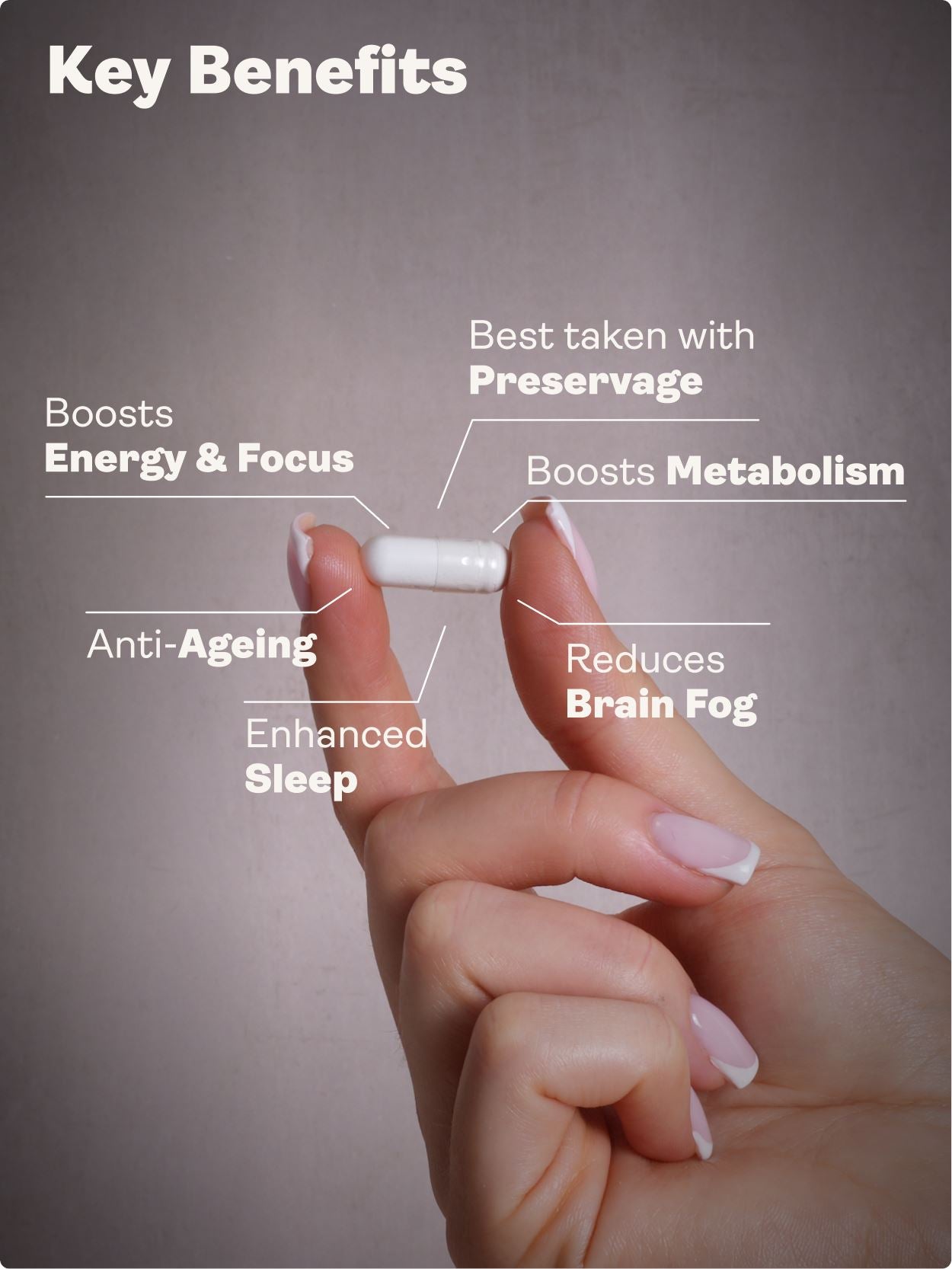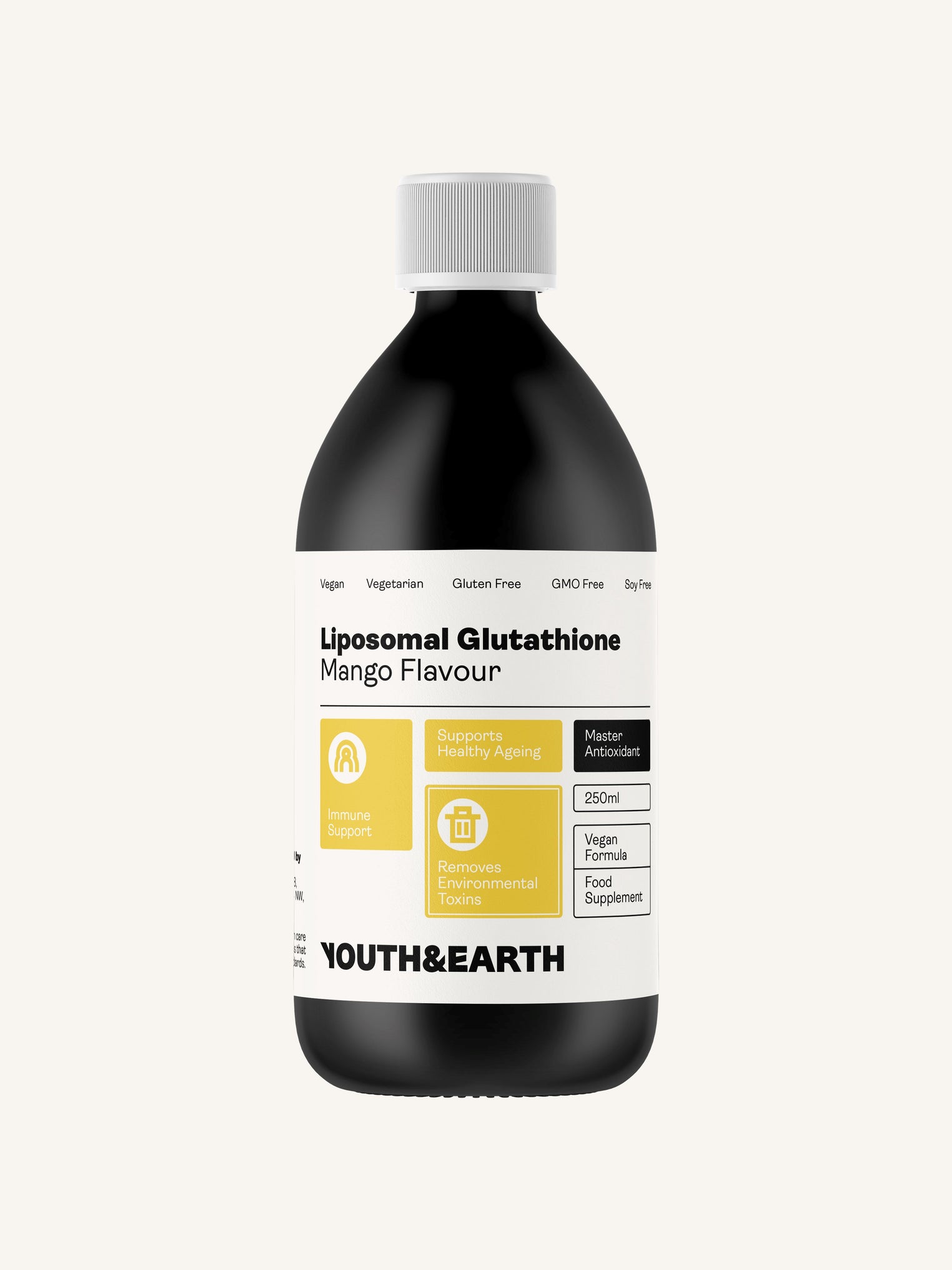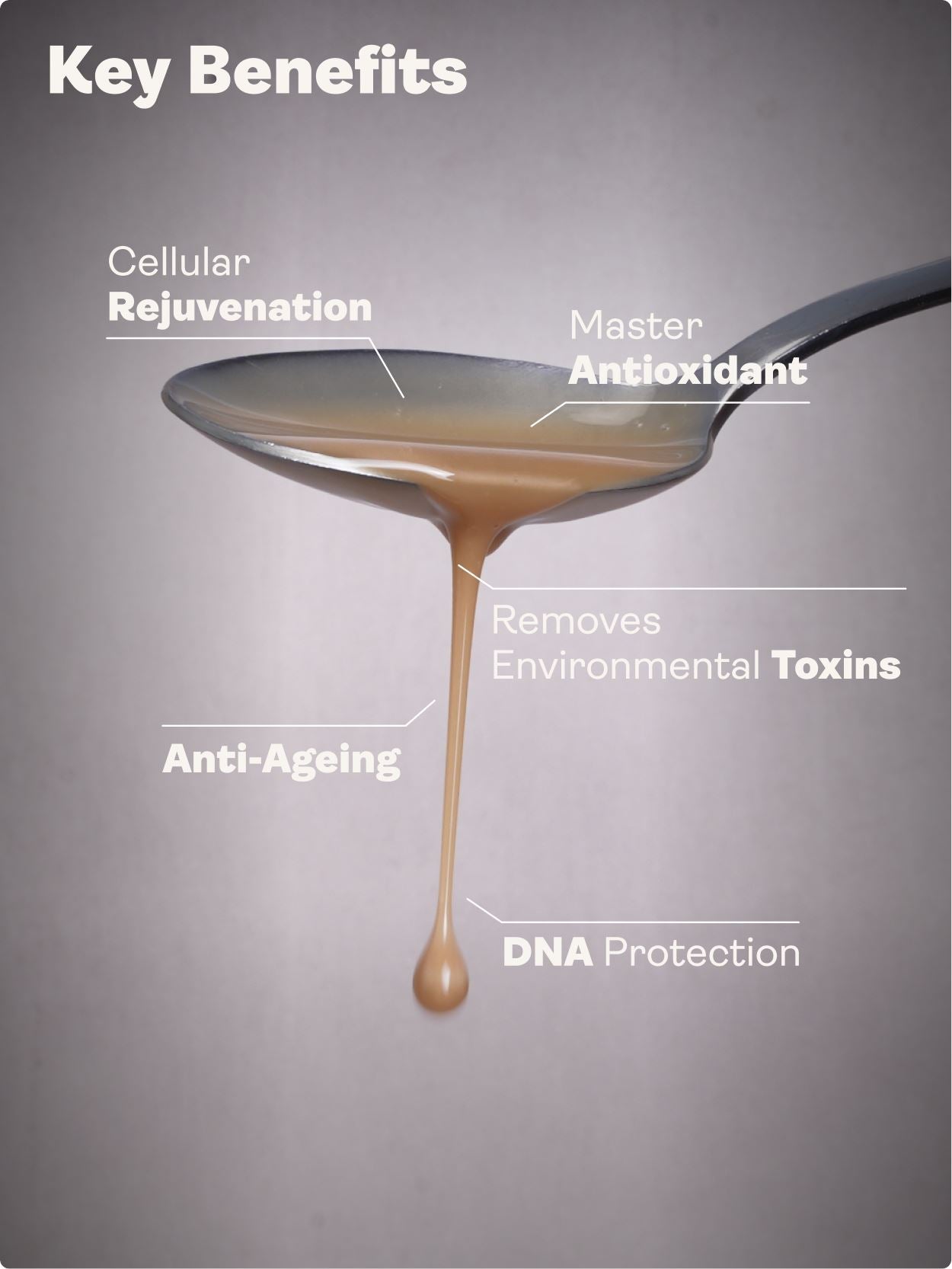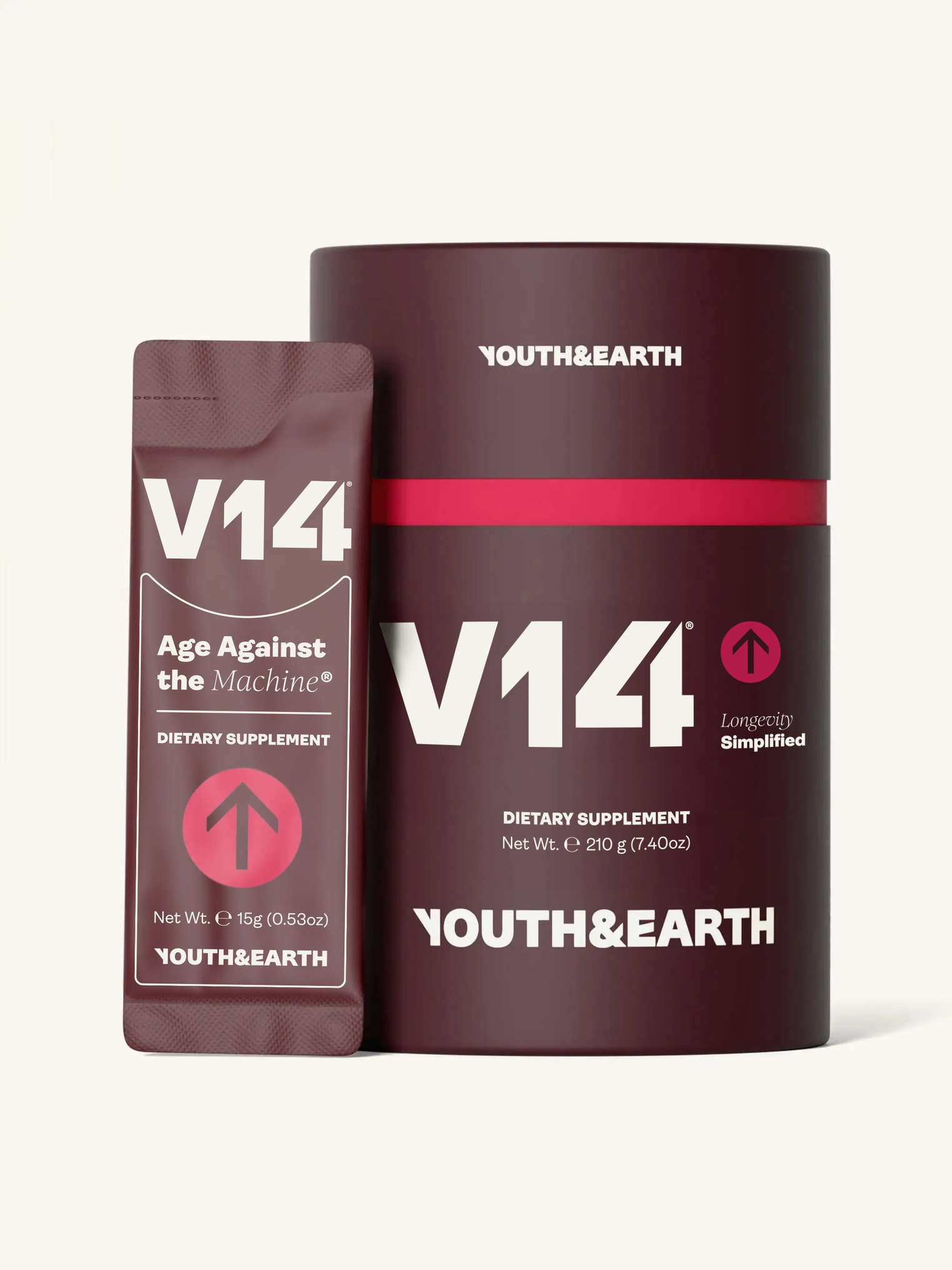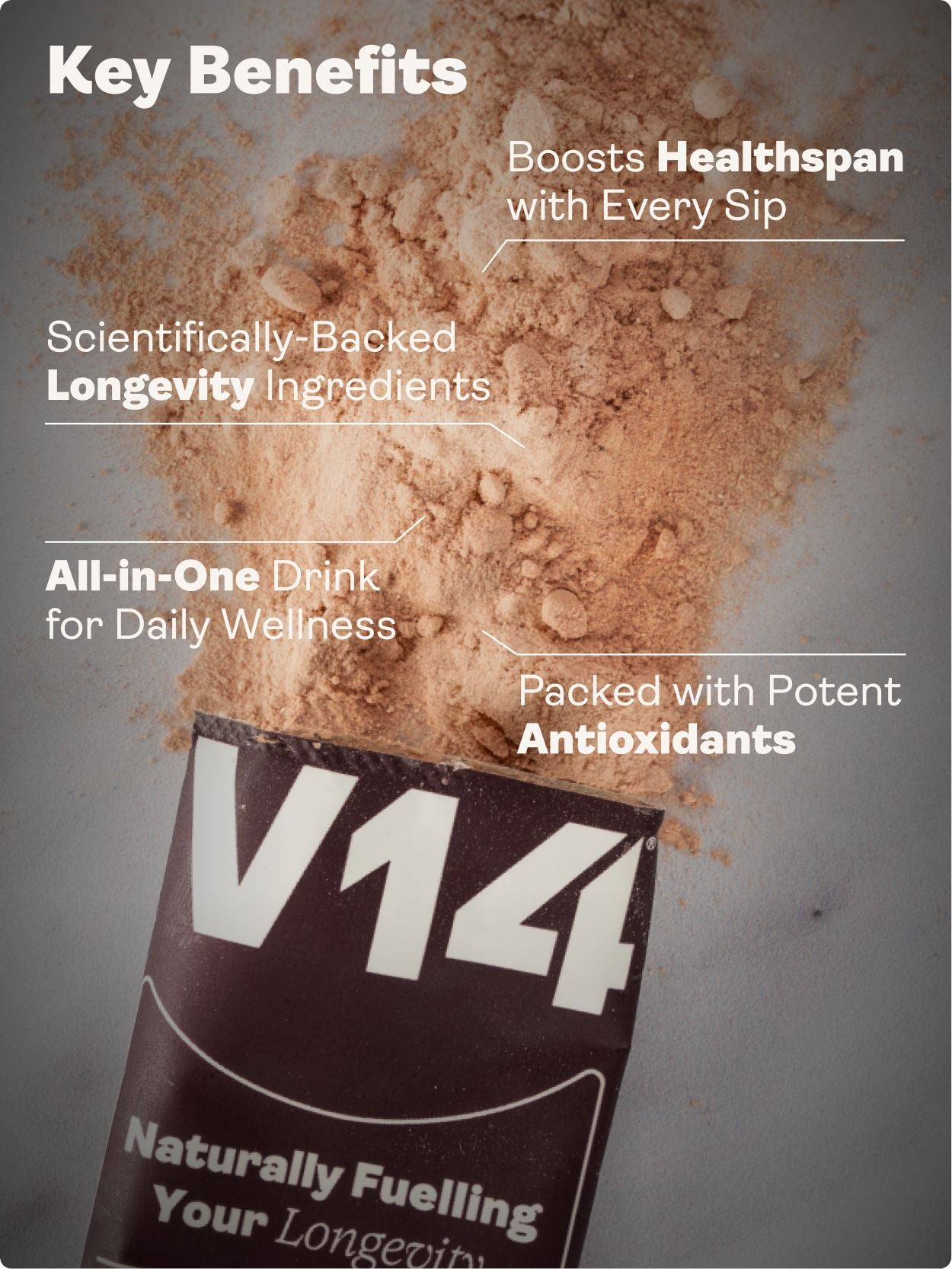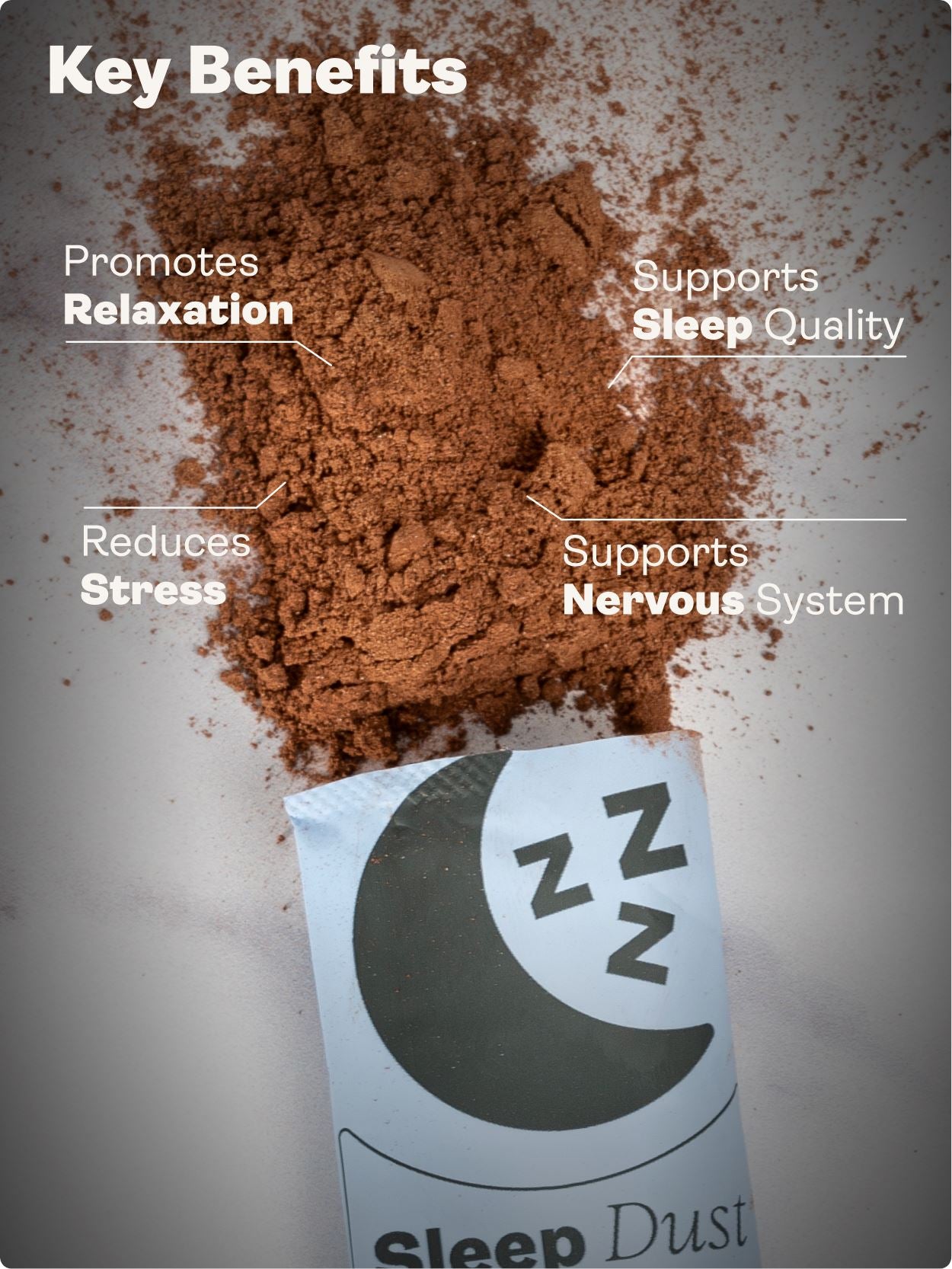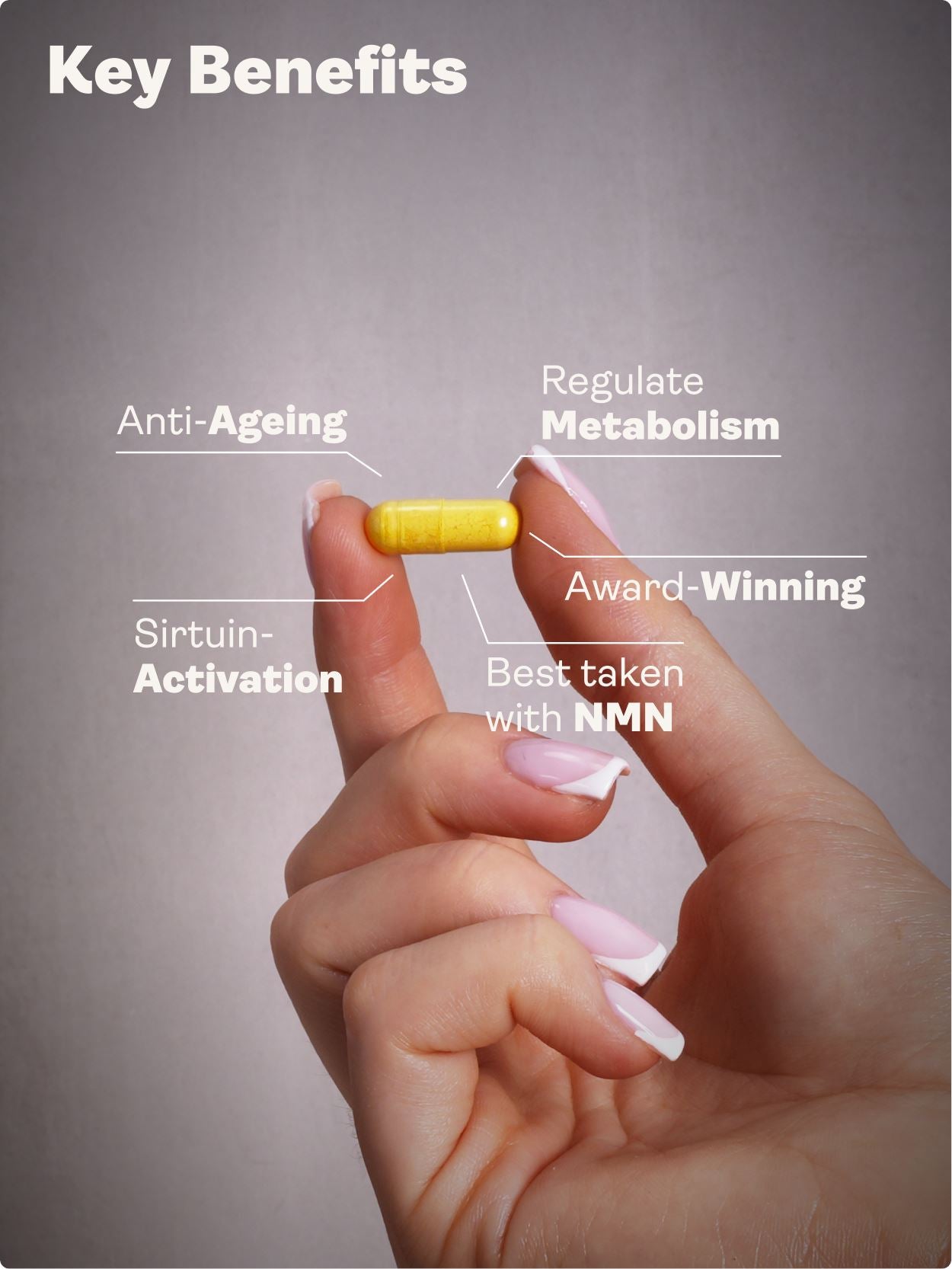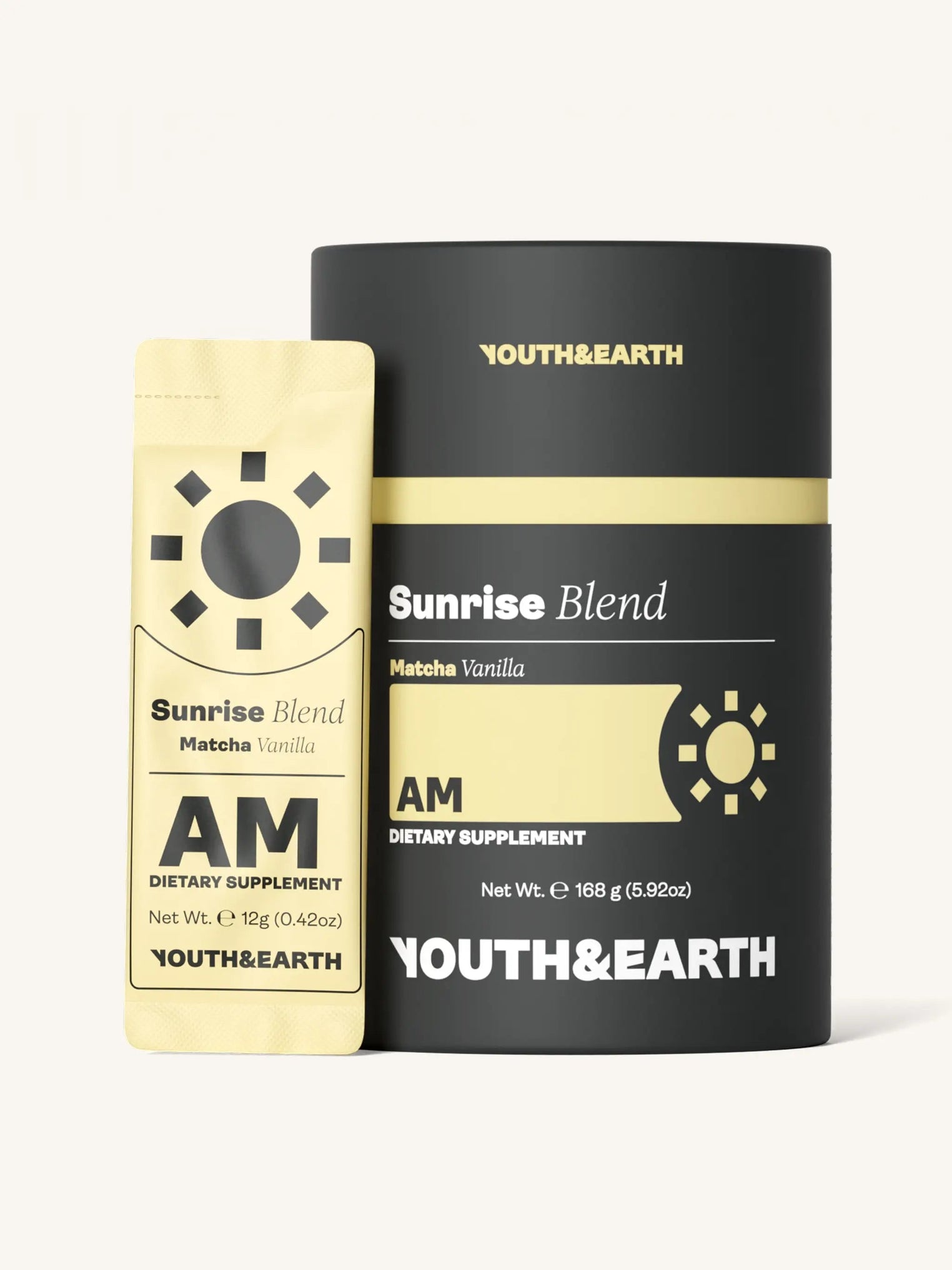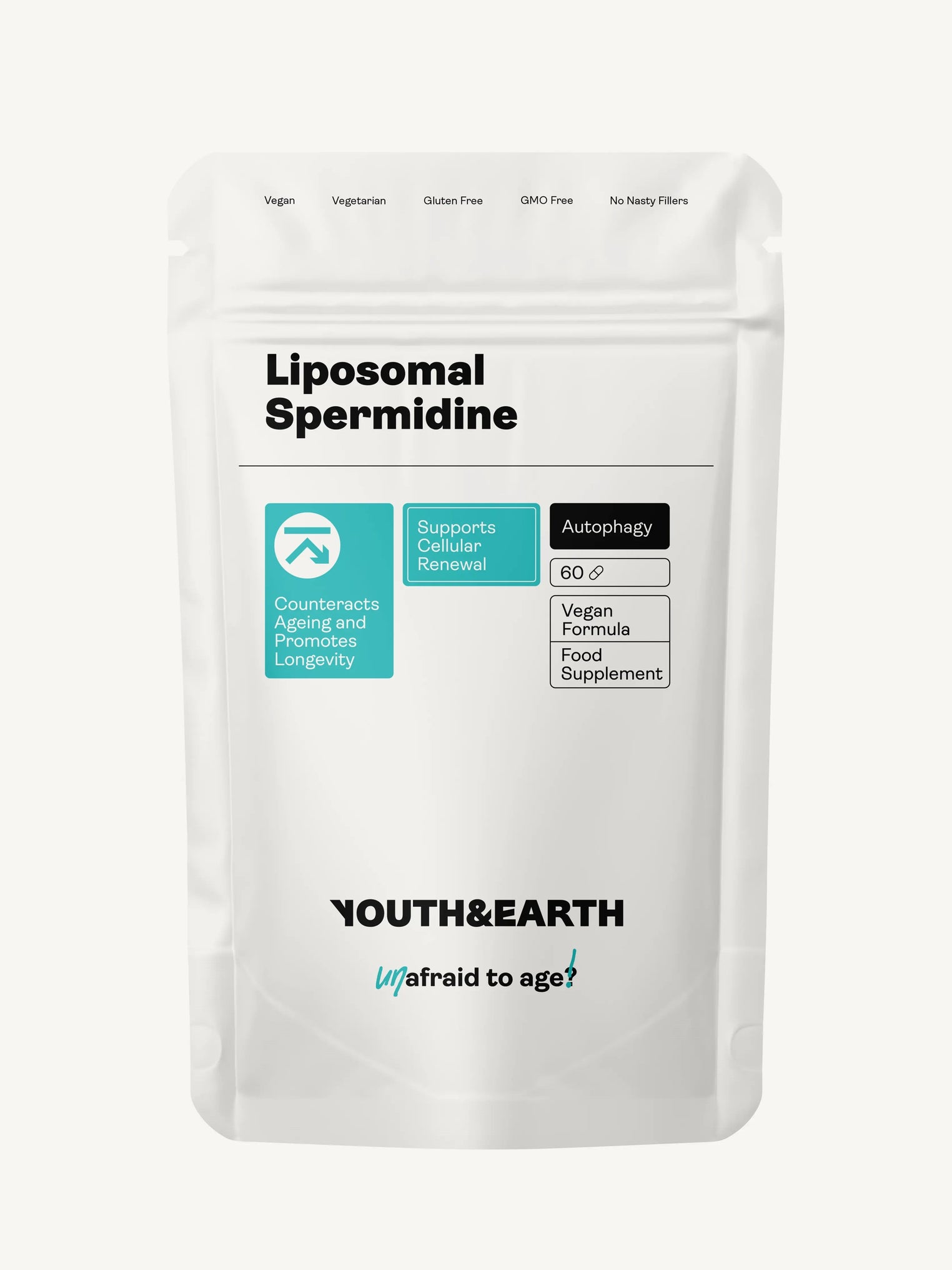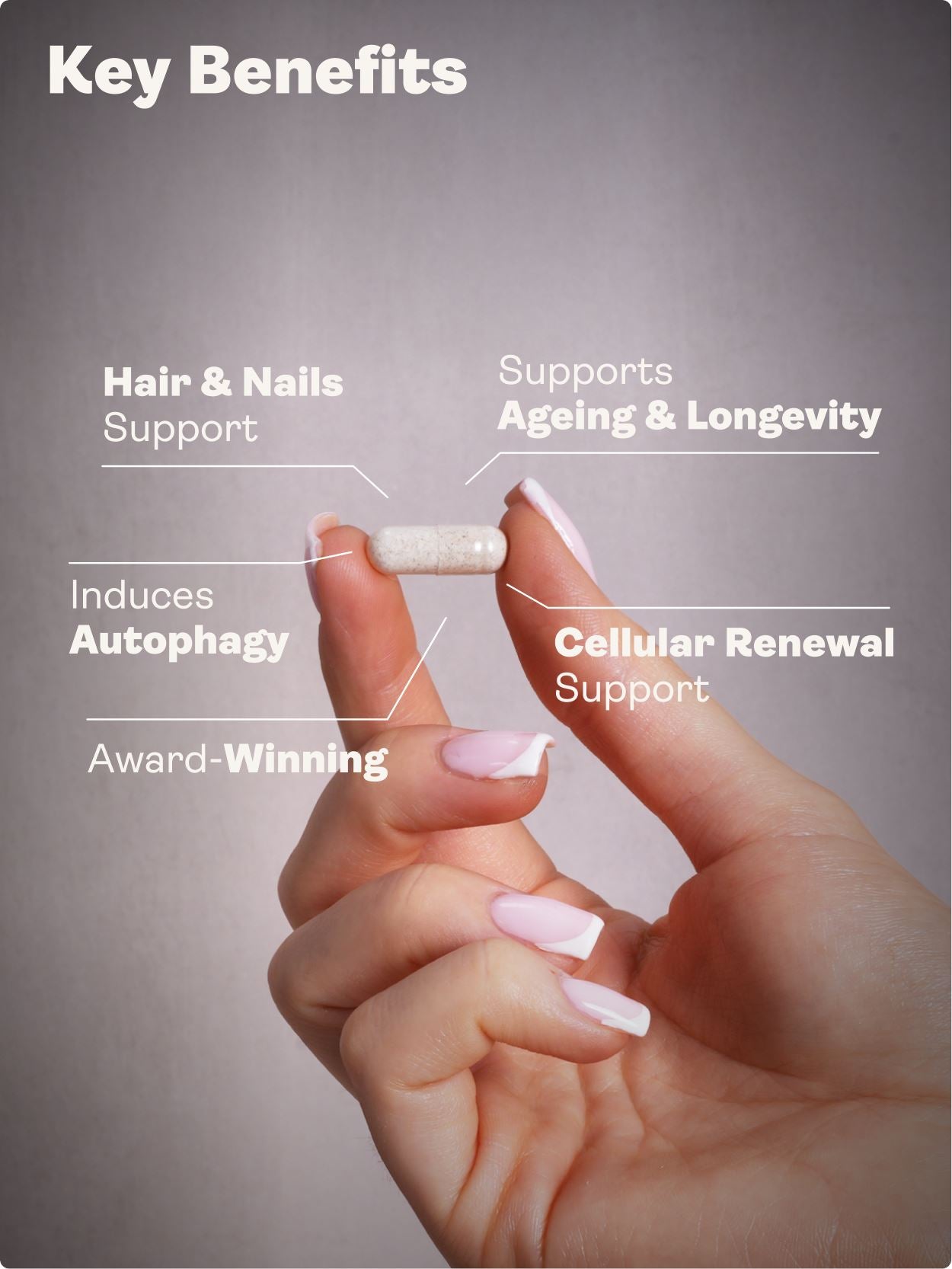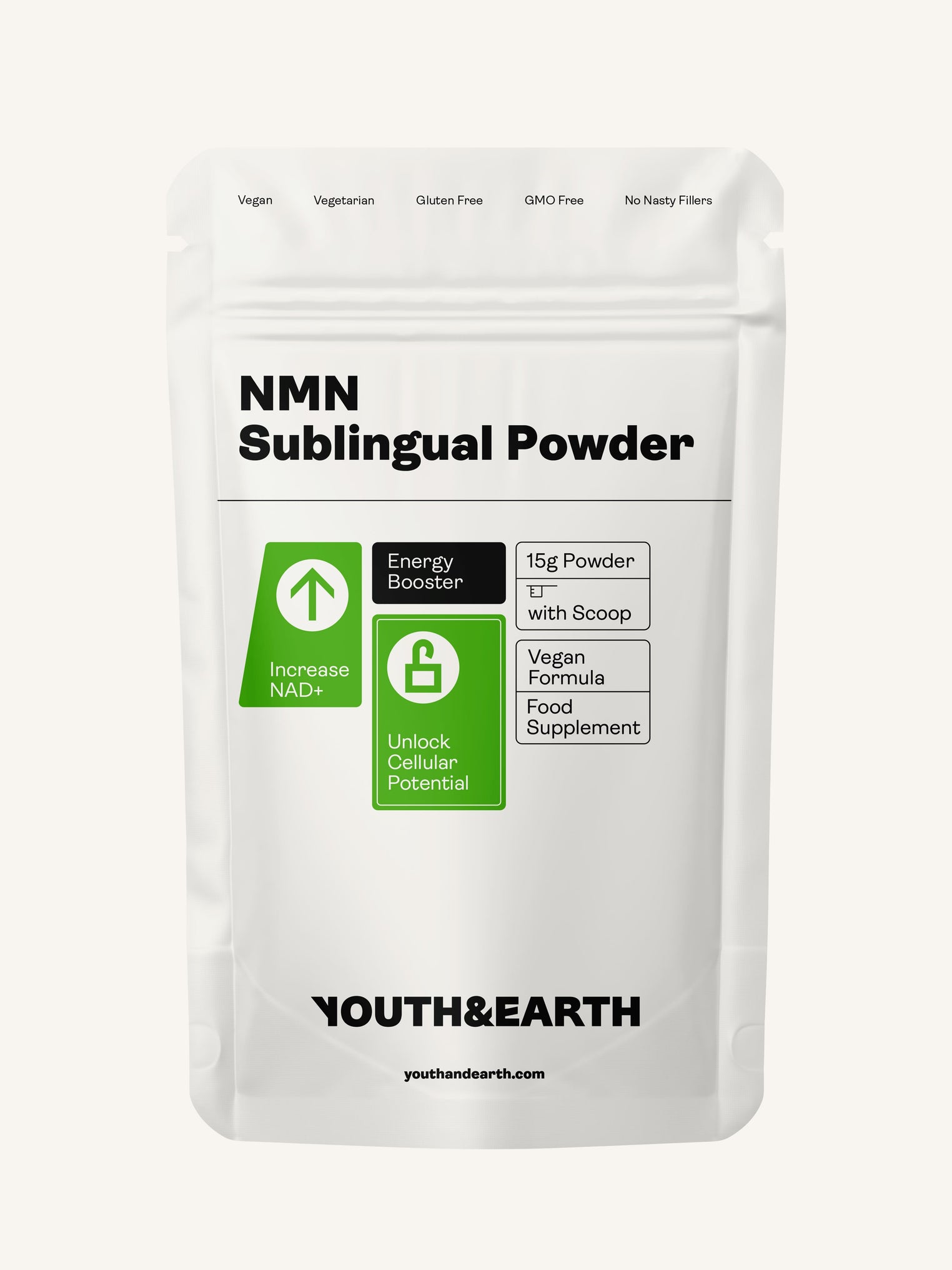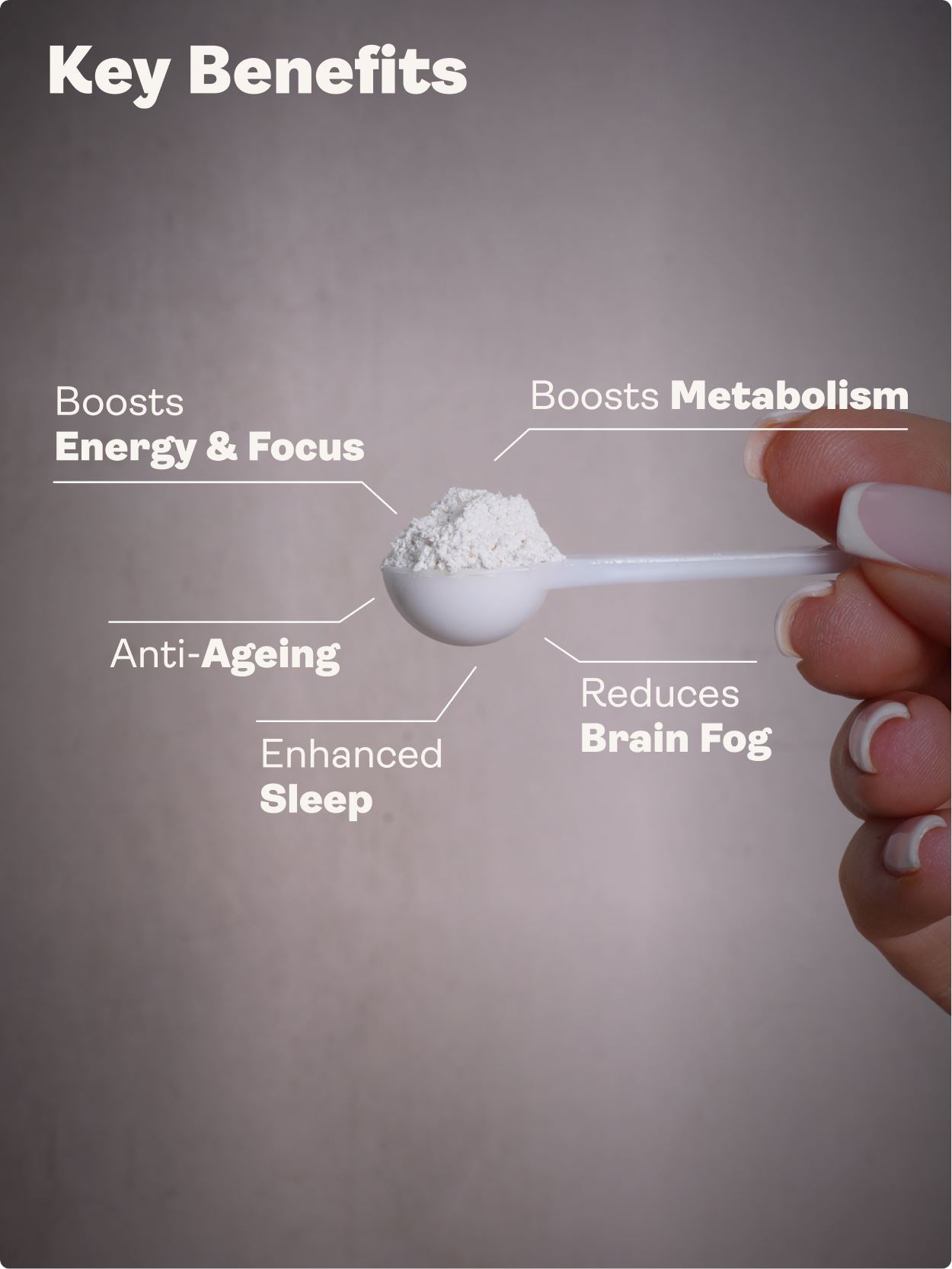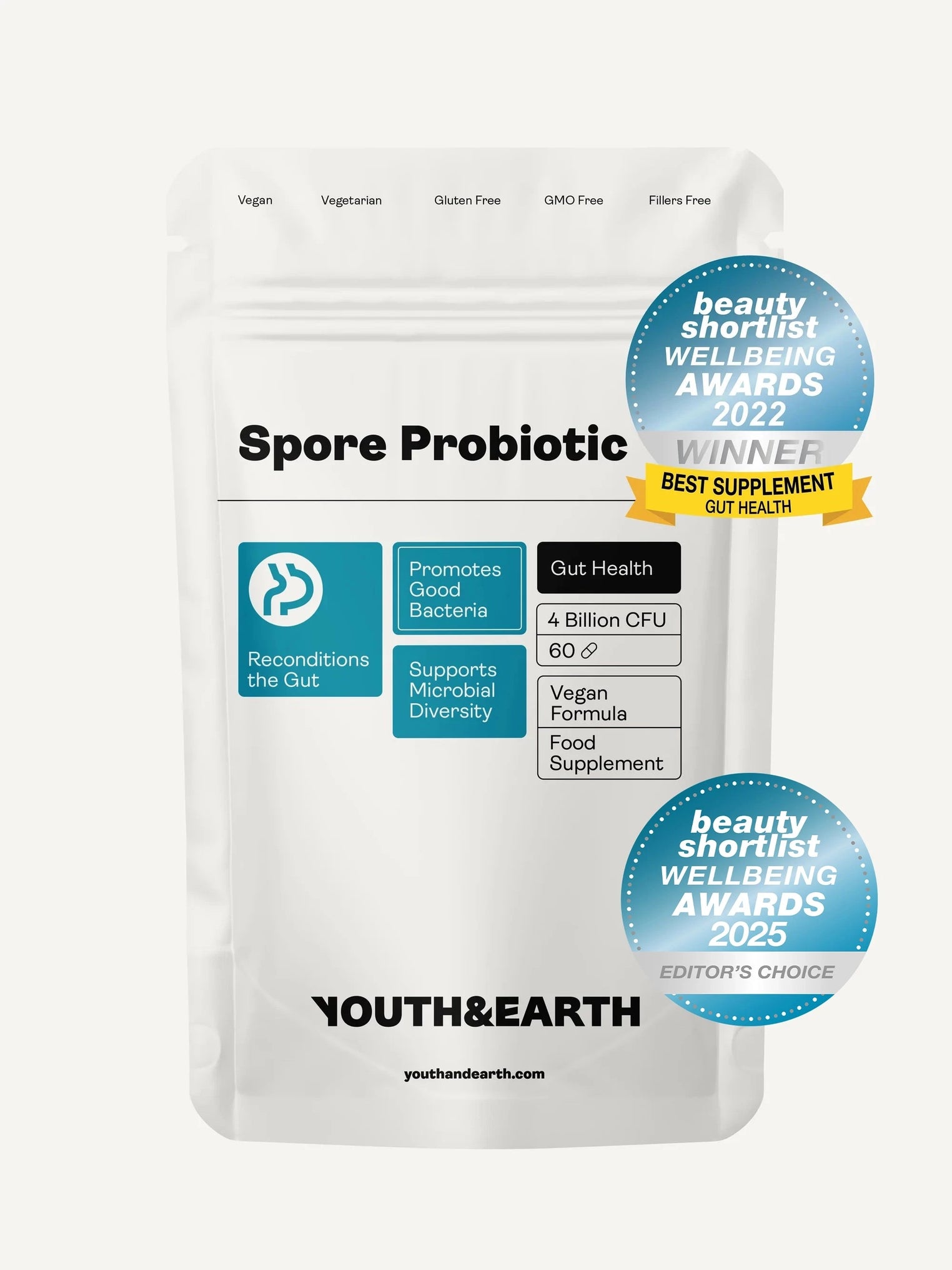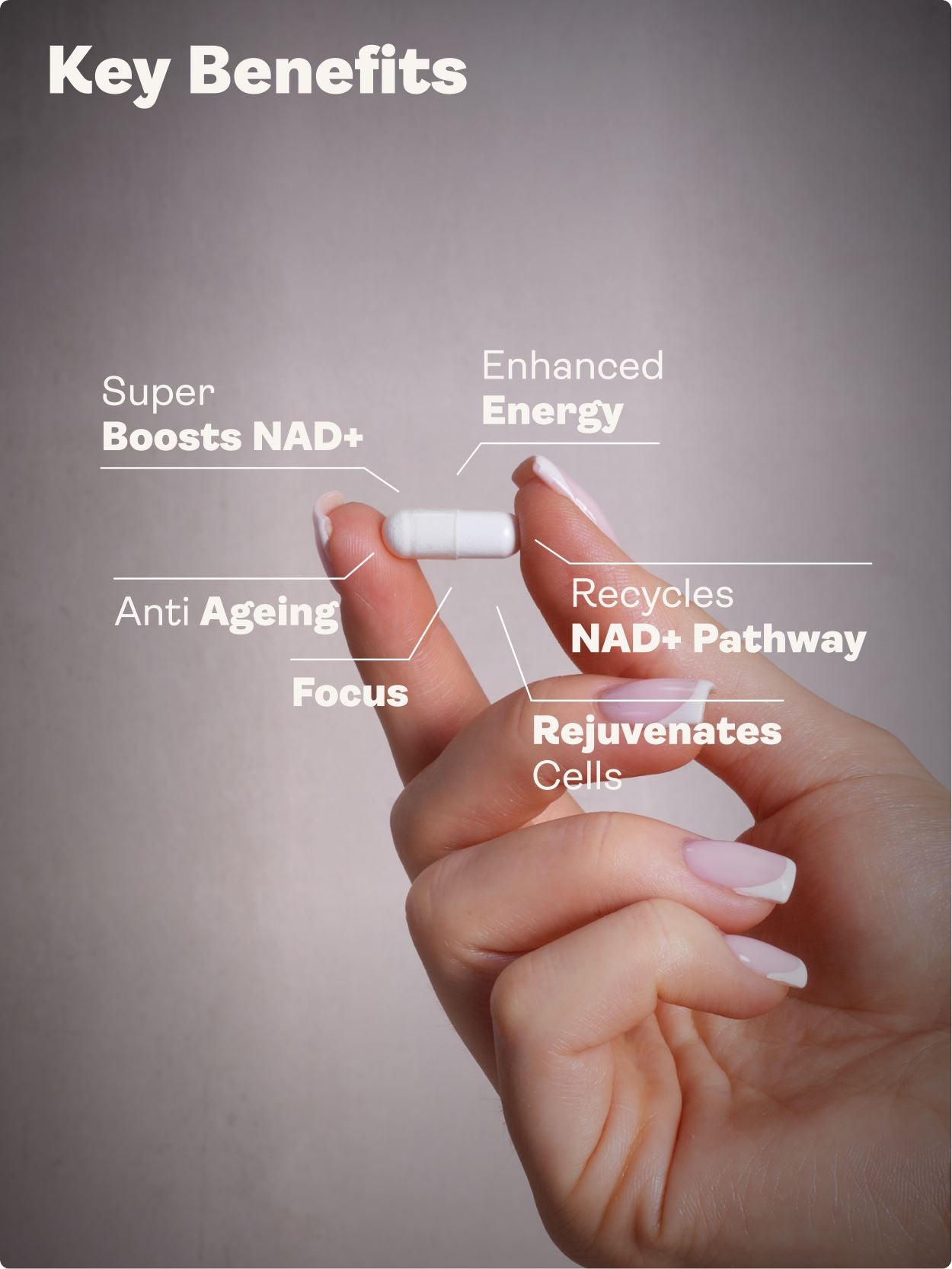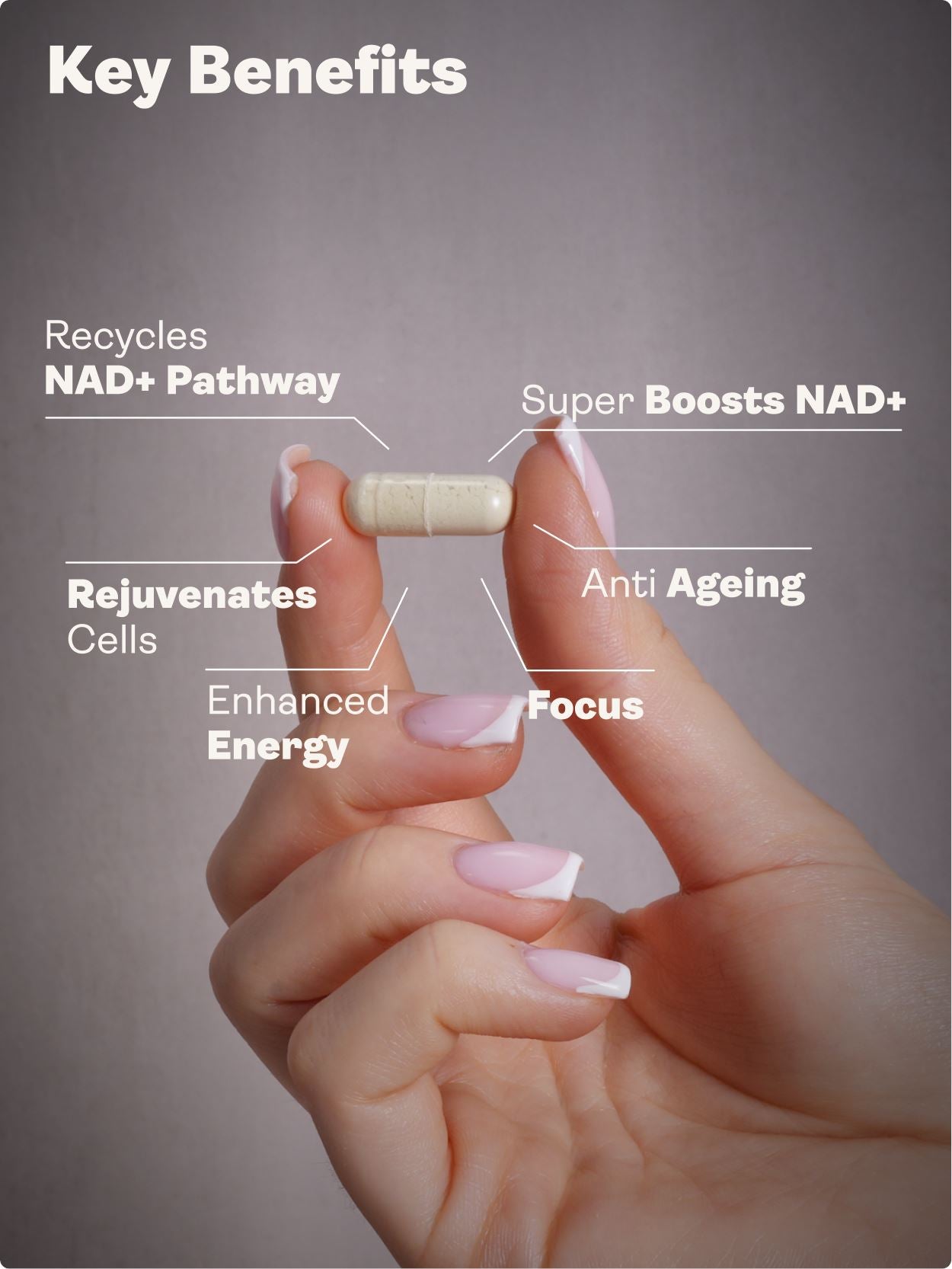The NMN Blog I Wish Existed: What It Is, Benefits, Side Effects, vs NAD
In the last 18 months I’ve seen something I’ve never seen before:
women in their late 30s, 40s, and 50s are turning to
NMN supplements as a daily “energy and longevity” habit and doing it at scale, without medical supervision.
The volume of “NMN benefits” and “NMN side effects” searches from women 40+ has spiked dramatically. People are buying fast.
And here’s why that worries me: most of what’s being said about NMN online is either fantasy (“reverses aging in 2 weeks”) or incomplete (“just take 1g, you’ll be fine”).
Neither is safe. Neither is useful.
Here’s the risk:
-
Take NMN blindly and you might get no result, disrupted sleep, or stomach issues and assume “it doesn’t work.”
-
Take it correctly and you may see smoother daytime energy, less 3pm drop-off, better next-day readiness in a way that feels sustainable.
This is the difference between “an expensive supplement that did nothing for me” and “this quietly leveled out my days.”
Setting The Record Straight
In the next 5 minutes, you will learn:
-
What NMN actually is and how it feeds NAD⁺
-
The real benefits: what women actually report feeling (energy, focus, recovery) and why that makes sense biologically
-
Side effects: why they happen, and how to avoid them with timing + dose
-
NMN vs NAD (and NR): which one makes sense for daily life and when NAD is still useful
-
The Top 5 ways to support NAD⁺ and cellular energy right now (ranked), including our NMN with verdicts
Let’s be clear on definitions, because most “NMN explainers” skip the part that actually matters for you.
NMN (nicotinamide mononucleotide) is a molecule your cells can use to build NAD⁺ through something called the salvage pathway.
Why that’s important:
-
NAD⁺ (nicotinamide adenine dinucleotide) is a critical coenzyme in basically all your cells.
-
NAD⁺ is involved in cellular energy production (redox reactions / ATP generation in the mitochondria especially at Complex I in the electron transport chain).
-
NAD⁺ also fuels NAD-dependent enzymes like sirtuins (SIRT1–7), PARPs, and CD38, which help regulate:
-
Mitochondrial efficiency
-
DNA repair signaling
-
Stress response
-
Inflammation control
-
Circadian rhythm / sleep-wake alignment
As we get older and as stress, sleep disruption, and inflammation go up NAD⁺ levels tend to go down. Lower NAD⁺ = less efficient energy production and repair signaling.
NMN matters because it sits one step away from NAD⁺. Inside your cells, enzymes called NMNATs convert NMN directly into NAD⁺. There’s also evidence that NMN can enter the cell via specific transporters, or via conversion to NR (nicotinamide riboside) outside the cell and then back to NMN inside through NRKs. Either way: more available NMN → more NAD⁺.
That’s the biochemical backbone behind the benefits people talk about.
Now, let’s translate that into what women actually feel.

The Benefits (what users report, mapped to biology)
These are the outcomes I hear most from high-output women who take NMN correctly (AM-only, appropriate dose, clean product):
1. Smoother daytime energy
“I don’t get that 3–4pm wall the same way.”
Why this makes sense:
More NAD⁺ means more efficient electron transfer in mitochondria, so ATP production feels less “forced.” This is not jitter energy. It’s “my energy doesn’t collapse.”
2. Cleaner focus / mental clarity
“I can stay in deep work longer without mentally fraying.”
Why this makes sense:
Neurons are brutally energy-hungry. NAD⁺ also supports sirtuin activity that links into circadian rhythm regulation. More NAD⁺ availability may support cognitive endurance not IQ points, but fewer mental dropouts across the day.
3. Better next-day readiness / recovery feel
“I can train and still show up tomorrow.”
Why this makes sense:
Mitochondrial efficiency + repair/recovery signaling are both NAD⁺-sensitive. You’re not getting “stronger overnight,” you’re getting “less fried the next morning.”
4. Appearance / skin quality over time
Some women report their skin just looking more “awake” over longer horizons.
Why this makes sense:
Skin cells’ repair signaling and oxidative stress handling are both NAD⁺-linked. This is slower, and it’s subtle, but it’s real-world feedback we hear.
When should you feel something?
Most people who feel a benefit describe:
-
Subtle improvements days 3–7
-
Noticeable stability weeks 2–3
-
A real “oh wow I had something” moment only when they stop for 4–7 days after ~30 days
That last part is huge. Most people really “feel” NMN in the absence (when they pause), not in the presence.
Side Effects (and why they’re mostly preventable)
This part gets ignored in hype content and it’s why people end up saying “NMN wrecked my sleep” or “NMN made me nauseous.”
Here’s what actually tends to happen:
1. Sleep disruption
If you take NMN late in the day, some people feel “too on” at night or report lighter sleep.
Why:
NAD⁺ intersects with sirtuin and clock-gene signaling basically, your circadian rhythm. You’re nudging a daytime process too late.
Fix:
→
Only take NMN in the morning.
We structure ours around AM-only use for exactly this reason.
2. Nausea / mild stomach discomfort
Sometimes people feel queasy taking it on an empty stomach.
Why:
Concentrated actives can irritate gastric lining in sensitive individuals.
Fix:
→ Take with water and something light, not bone-dry.
3. “Overclocked” feeling
Some people jump straight to high doses (400mg+, 500mg+ on day one) and report feeling wired or edgy.
Why:
Massively increasing precursor availability can spike subjective alertness in a way that feels too fast.
Fix:
→
Start low (125–250mg AM), hold for 10–14 days, then evaluate.
→ If tolerated, move to 250–300mg AM.
→ Don’t climb just because someone on a podcast said they take a gram.
4. Interactions / medical context
Pregnancy, nursing, active health conditions, prescription meds = talk to your clinician first.
This is education, not diagnosis or treatment. We’re not making disease claims.
NMN vs NAD (and where NR fits)
People throw all three around like they’re interchangeable. They’re not used the same way in real life.
NMN
What it is:
Nicotinamide mononucleotide one step from NAD⁺ via NMNAT in the salvage pathway.
How it’s used:
Daily oral routine. AM only.
Why people like it:
Convenient. Builds NAD⁺ availability in a way that can feel like stable energy, cleaner focus, smoother afternoons.
Watch-outs:
Needs correct timing. Requires purity you can trust (≥99%, verified COA). Not a stimulant, so the signal is subtle.
Best for:
Daily capacity “keep me sharp and steady.”
NAD⁺ (IV/IM)
What it is:
Direct delivery of NAD⁺, usually via clinic drip.
How it’s used:
Occasional sessions pre-travel, recovery weeks, “I need a jolt.”
Why people like it:
Some experience an immediate “reset” feeling.
Watch-outs:
Time, cost, access. It’s not realistic as a daily habit for most people.
Best for:
Event-based intervention, not maintenance.
NR (Nicotinamide Riboside)
What it is:
A different precursor. NR → NMN via NRKs → NAD⁺.
How it’s used:
Daily capsule. Often used as an alternative for people who prefer NR’s profile.
Why people like it:
Good research runway. Good tolerability.
Watch-outs:
Some people report the subjective “feel” is milder than NMN.
Best for:
Rotation/off-cycle, or if NMN upsets your stomach.
Bottom line for most high-output women I speak to:
-
NMN = most practical daily habit to support NAD⁺, energy metabolism, and focus.
-
NAD+ IV = strategic, occasional “booster.”
-
NR = alternative input if you want to rotate precursors or if NMN didn’t agree with you.
Top 5 Ways to Support NAD⁺ and Performance (Ranked)
5) Lifestyle Levers
What it is:
Sleep regularity, resistance training, protein, daylight in the morning.
Why it works:
Training and circadian alignment naturally support mitochondrial biogenesis and NAD⁺-related signaling.
Limitation:
Slow to feel. No clean 30-day “was this worth it?” read unless you’re very disciplined.
Verdict:
Foundational. You cannot out-supplement wrecked sleep.
4) NAD⁺ IV/IM Sessions
What it is:
In-clinic NAD⁺ administration.
Why it works:
You increase NAD⁺ directly, fast.
Limitation:
Time cost, money cost. Not realistic as a daily lever.
Verdict:
Good for “reset weeks,” not for day-to-day capacity.
3) NR Capsules
What it is:
Nicotinamide riboside, a precursor that converts to NMN then NAD⁺.
Why it works:
Documented pathway, good tolerance profile.
Limitation:
Some people say “I don’t actually feel much.”
Verdict:
Solid alternative / rotation tool.
2) Random NMN From Marketplaces
What it is:
Generic NMN (often cheap powders or unverified caps).
Why it works (in theory):
Right molecule.
Limitation:
Purity varies, stability varies, COAs not always real.
If potency is off, you tell yourself “NMN does nothing,” when actually you just never got what you thought you bought.
Verdict:
High noise, high disappointment rate.
1) Our NMN (Batch-Tested, AM-Only Protocol Included)
What it is:
NMN with ≥99% purity, 3rd-party tested for identity / potency / heavy metals / microbials. Stability-aware packaging. Each batch is traceable and you can view the COA. We include a dosing/sleep protocol and a simple 30-day self-audit log.
Why it works:
It gives you the
real molecule + the
correct usage pattern (AM-only, start low, scale to 250–300mg if tolerated), so you can actually detect the benefits we talked about: smoother daytime energy, cleaner mental focus, less next-day drag.
Limitation:
It’s not a stimulant. If you expect fireworks in 24 hours, you’ll call it “nothing.” You need to run the 30-day audit and the 4–7 day pause.
Verdict:
This is the most practical daily approach for women who want capacity, not chaos.

Here’s why our NMN is the daily habit I recommend first:
-
Mechanism: NMN is one enzymatic step from NAD⁺ (via NMNAT), so it plugs directly into the salvage pathway that supports cellular energy production.
-
Benefits that map to biology: Users report steadier energy, more reliable focus, and better next-day readiness especially in the 3–4pm window which matches what we expect when NAD⁺ availability improves.
-
Side-effect control: We include an AM-only, start-low protocol to protect sleep and avoid GI discomfort.
-
Quality: ≥99% purity, 3rd-party COAs (identity, potency, heavy metals, microbials), stability-focused packaging, batch lookup.
-
Clarity: You get a 30-day tracking sheet and the 4–7 day pause method so you can actually answer, “Is this worth staying in my stack?”
This is exactly how you take NMN from “internet trend” to “I tested it and here’s what it did for me.”
If you want to run the clean 30-day NMN audit, we recommend AM-only dosing, start at 125–250mg, protect sleep, track energy/focus/recovery, then pause and feel the contrast. You can check current stock and pull the COA for your batch.
→ View Availability
(Education only. Not medical advice. If you’re pregnant, nursing, have a condition, or take prescription medication, speak to your clinician before use.)




